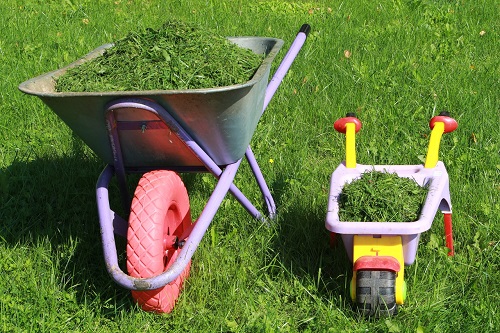
As we embrace the arrival of summer, it’s essential to equip ourselves with effective strategies to keep our lawns thriving under the scorching sun. Adequate watering takes center stage, with the golden rule being to provide at least one inch of water per week to maintain a healthy and balanced lawn. To help you achieve optimal results, we’ve gathered valuable tips from lawn care professionals.
Summer Lawn Care Tips:
Smart Watering:
Once you commence watering, consistency is key. Instead of shallow and frequent watering, adopt a deep watering approach at less frequent intervals. This method encourages deeper root growth, making your lawn more resilient to drought and reducing the need for excessive lawn maintenance. Water your grass in the early morning hours to allow ample time for water absorption into the soil rather than losing it to evaporation. Avoid watering in the evening to prevent the onset of fungi and diseases. Additionally, invest in practical and efficient watering tools to simplify the process.
Fertilization:
Applying high-quality fertilizer during the early morning hours of summer yields the best results. Premium fertilizers provide extended feeding to your grass while minimizing the risk of heat-induced damage.
 Optimal Grass Length:
Optimal Grass Length:
Throughout summer, it’s beneficial to maintain a longer grass height. The crown of the grass, where new growth emerges, can be safeguarded by longer blades. This shading effect helps protect the crown from excessive sun exposure and prevents it from scorching.
Battling Grass Diseases:
Brown patches are a common sight during summer, often signaling fungal diseases resulting from neglected heat stress and grub damage. To accurately identify the issue, closely inspect your grass blades. If you notice black or gray banding running horizontally across the blades, consult Conway Lawn Care Services. Their experts can determine the specific disease and recommend an appropriate fungicide for healthier grass growth.
Mulching:
To protect newly grown lawns, apply a thin layer of mulching straw. Just one or two bundles can cover 1,000 square feet. After approximately three weeks, remove the straw to allow for proper germination.
Preserving a layer of grass clippings on your lawn helps retain soil moisture and acts as a natural fertilizer. However, be mindful not to leave excessive amounts, as it can lead to thatch build-up. Mulching with clippings works best when the lawn is regularly mowed and not allowed to grow too long. Wet or lengthy clippings tend to clump together, hindering grass growth and causing potential issues.
Always remember that warm-season grass thrives in southern regions, experiencing accelerated growth as temperatures rise during summer. Grass varieties like Bermuda, St. Augustine, and Zoysia flourish when soil temperatures range between 70 and 90°F, accompanied by pleasant air temperatures of 80 to 95°F. They enter a dormant phase as cooler weather sets in.
Selecting the most suitable grass type for your specific region will ensure your lawn looks its absolute best. For further summer lawn care guidance, reach out to Conway Lawn Care Services, where their experts will be delighted to provide additional tips and advice.
Like our Facebook page for more great info about lawn care services.
Conway Lawn Care Service
Conway, SC 29526
843-353-2259
http://conwaylawncareservices.com/
No comments:
Post a Comment